
Tracks on the Lake(Fujifilm X Pro 1, Fujifilm XF 18-55mm f2.8-4)
Faithful readers of this site are aware of my affection for the Fuji X series cameras, both the X100 and the X Pro 1.
I think perhaps the one characteristic shared by both cameras is the very high quality lenses Fuji has designed for both devices. This includes the fixed 23 MM lens on the X100, and the three original prime lenses offered with the X Pro 1. Still and all, there are times when a zoom lens is helpful, particularly in circumstances where “zooming with your feet” is impossible. And although these cameras seem to have less propensity for motion blur then say, a digital SLR with the big moving mirror, it still an issue. It is particularly a problem when I use the cameras while hiking, when my vigorous cardiac contractions can cause camera shake. With all this in mind, I was very eager to try the 18 -55 mm f2.8-4 image stabilized zoom lens Fuji announced with the X E1. I was hopeful that the high quality of the prime “XF” lenses, would carry over to the new zoom.
I finally received word several weeks ago that the lens was in stock at B and H so I ordered one. I’ve been shooting with it in a number of settings and would offer these observations.
Obviously this is less than a formal review. There’ll be no resolution charts or other such technical data (I lack both the equipment and the inclination).
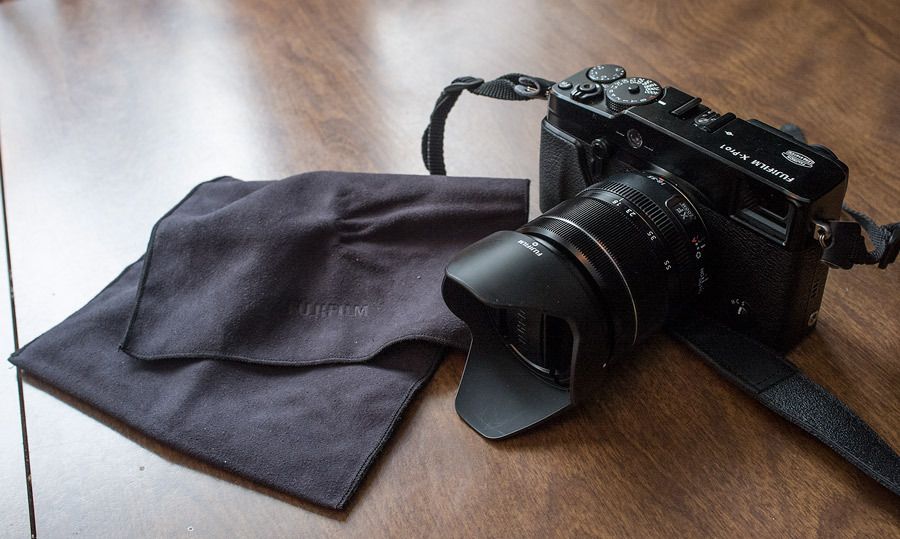
The Lens mounted, and the Case( Fujifilm X 100)
The lens arrived in the usual black Fuji packaging. Included with the lens, is a scalloped lens hood and a pinch lens cap. Unlike some of the prime lenses, the hood and lens cap function much like more conventional lenses (the hood can be reversed and stored on the lens). The lens also comes with the familiar XF mount lens pouch which is larger than the lens, and closed by folding the end flap over itself (I’d really rather a drawstring). Happily the build quality of the lens seems identical to the prime lenses. The lens is mainly metal with very precisely machined ridges on the zoom and focus rings. Happily it is not much bigger than the 35 mm prime with its rectangular lens hood.
Unlike the prime lenses, the aperture ring has no markings and the aperture is determined by looking at the viewfinder, or rear LCD. There is a separate switch which determines whether the aperture ring functions, or whether the aperture is set to automatic (allowing shutter priority shooting). The movement of all the rings is very smooth. I don’t use manual focus very much but the amount of travel required of the focus ring to go from near too far, seems fairly modest. In my experience autofocus with this lens is fairly quick, perhaps roughly as good as the 35 mm.
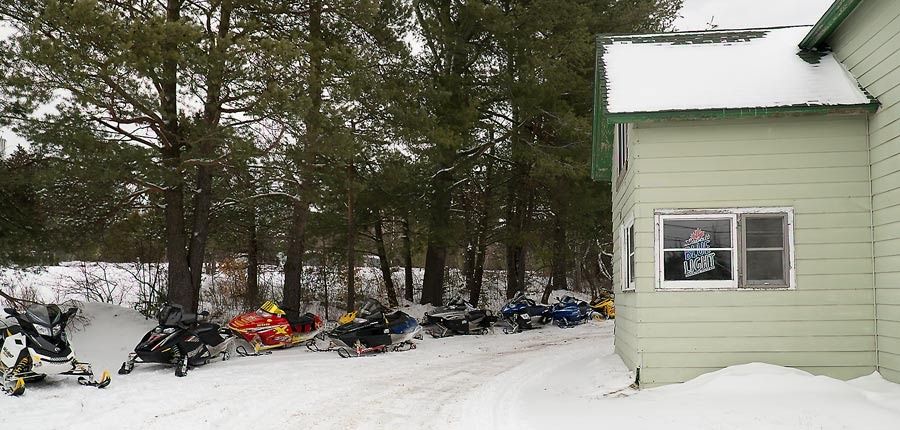
The Shamrock on Saturday (Fujifilm X Pro 1, Fujifilm XF 18-55mm f2.8-4)
One great feature of this lens is that it is image stabilized. It’s always hard to know how well this feature works. I become fairly adept at shooting the non-image stabilized Fuji lenses without much motion blur. Reportedly the feature is good for keeping the image sharp for 3-4 stops of longer exposure.

Carrie and Eddie (Fujifilm X Pro 1, Fujifilm XF 18-55mm f2.8-4)
This lens is really meant to be used with the electronic viewfinder. At shorter focal lengths, the optical viewfinder can be useful, but as the lens is zoomed, the bright frame delineating the actual image, shrinks to a point where is roughly the size of the focus box, and thus essentially useless for framing. I just keep the viewfinder set to electronic, which for me works fine.
I had the lens with me for a recent model shoot, and for a trip to the Adirondacks. It is fairly fast (maximum aperture at 55 mm is f4.0). For portrait work, I obviously used the long end of the zoom, but even with the slightly tighter aperture, background blur, I think was quite pleasing and the lens was very sharp. I would have to say however, that the 60 mm f2.4 really shines in this setting.

Katie(Fujifilm X Pro 1, Fujifilm XF 18-55mm f2.8-4)
The lens really comes into its own for landscape photography. Fitted to the X Pro 1, the combination easily fits in my small Mountainsmith fanny pack. Particularly in the middle of its focal range, the lens is fairly sharp corner-to-corner and quite contrasty, much like its prime brethren.
I was curious to compare the lens to a known standard. Unfortunately the only lens that I have in the XF line within the zoom’s focal length range is the 35 mm f1.4 so I shot them against each other using my usual tabletop scene, both at f3.6.
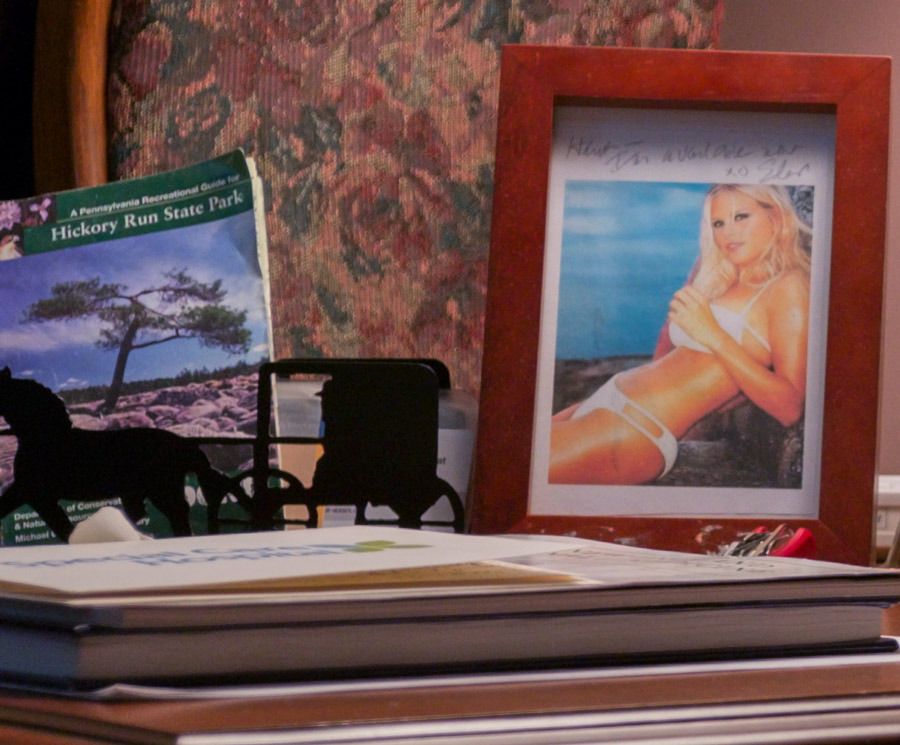
!8-55 100% Crop
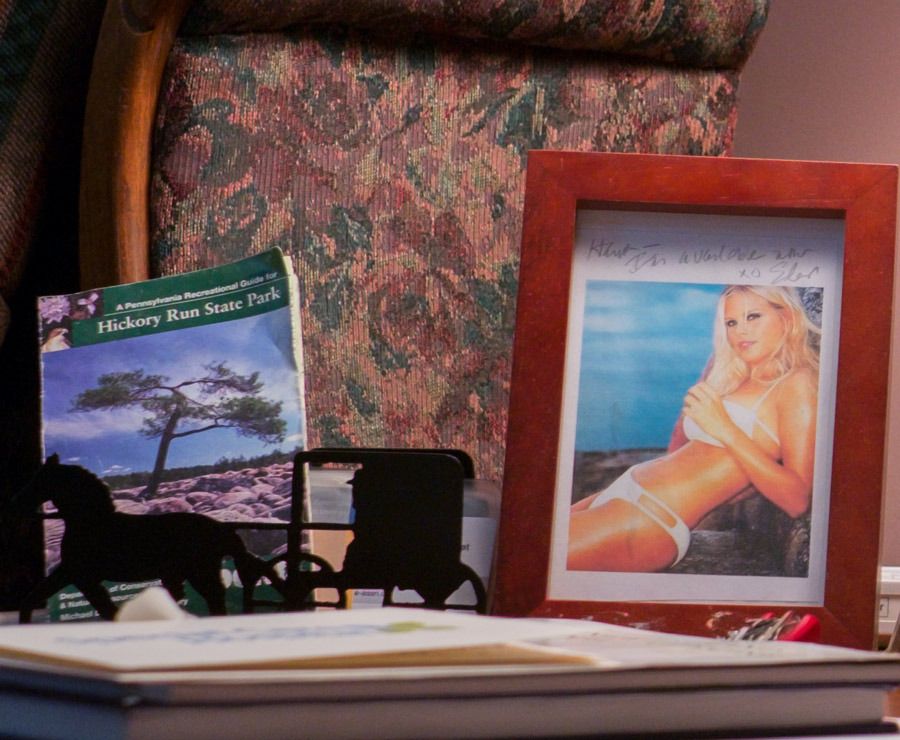
35mm 100% crop
These crops are taken from the periphery of the image, as I think the center image is fairly close between the two lenses in terms of sharpness. I think you’d have to agree that the 35 mm is better at the periphery, hardly a surprise. I would say however that the 18-55mm has many of the same positive attributes, of the 35mm, and 60 mm I already possess.
It will be tempting to leave it on the camera most of the time.
With this lens I have no burning desire to obtain the 18 mm prime lens. The 14 mm f2.8 and the upcoming 23 mm however still interest me, and I will look to acquire them.

Warm Day at the Ice Lakes(Fujifilm X Pro 1, Fujifilm XF 18-55mm f2.8-4)
In summary, this is a really nice addition to the XF lens line. It appears to continue the reputation of the Fuji lenses for great optical quality at a very reasonable price. If I had to do over, I might have bought an XE 1 with this lens (which makes the lens an even better bargain) and then acquire the primes over time.
Adding it to my X Pro 1 has made the system a lot more versatile and fun.

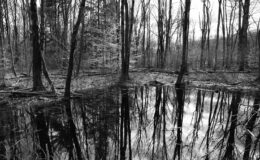
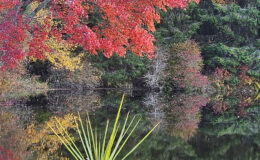


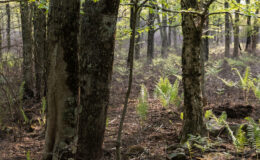
D Faulkner
May 11, 2013 5:45 pmNice concise review. Just got this lens with the X-E1. What do you think the optimum aperture is for landscapes before defraction sets in with it?
henrysmithscottage
May 11, 2013 9:27 pmI would suspect that f11 might be a safe aperture.
Cali Swain
August 14, 2013 10:13 pmI think the 18-55mm is either front focused (or there is field curvature) in that comparison photo with the 35mm… Look at the book in the foreground. It’s blurry in the 35mm shot but pretty sharp in the 18-55m shot.